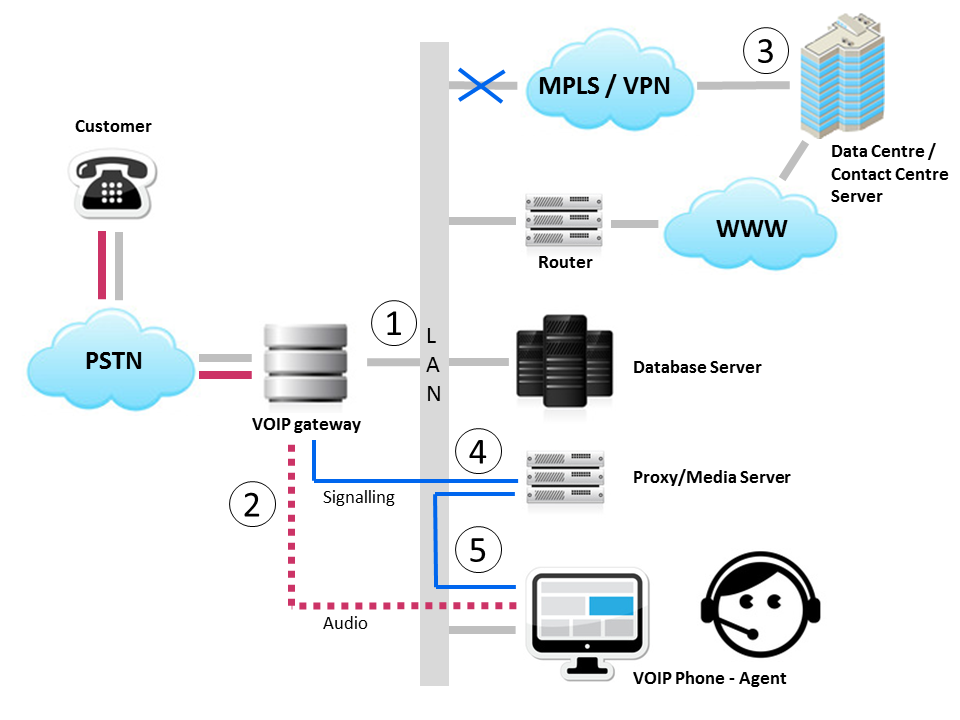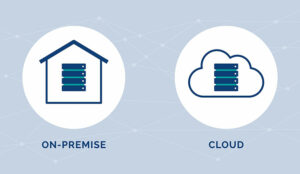Many companies are already moving their contact centre operations to the cloud to gain greater business efficiencies. But what they may well have not accounted for is what happens in the event of losing connectivity with the cloud datacentre. Without the right measures and technology in place, many would be left cut off from their customers, which could prove very costly and immediately wipe out any potential savings from being in the cloud.
The solution
Hybrid solutions are now available that offer the flexibility and scalability of the cloud, while at the same time giving the assurance and peace of mind offered by on-premise solutions.
How it works

The diagram shows the advantages of a hybrid solution over the cloud in the event of a server in the datacentre that powers a network becoming unavailable, for example, due to an MPLS (multi-protocol label switching) outage.
- When everything is functioning as it should, a customer call will travel through the public telephone network and is connected to a company via a telecommunications trunk. This trunk connects to the gateway and is converted to voice over IP (VoIP).
- At this point, the call splits into two streams: SIP and RTP or real-time protocol. The SIP stream is low-bandwidth and used to control the call, for example, transferring or disconnecting it, while the RTP stream is the actual call audio.
- The SIP travels over MPLS or VPN (virtual private network) to the datacentre where complex call-routing logic is carried out, which has been pre-defined by the customer. In a contact centre application the call from the customer can be queued until a suitable agent becomes available.
- Unlike the SIP signalling stream, the audio stream stays on the client network, where it closes on the proxy/media server. This proxy/media server acts as an emergency lifeline if anything happens to the datacentre server, ensuring an organisation can still take calls. It even allows queuing and routing of calls, albeit in a less sophisticated way than through the datacentre server.
- In an emergency, SIP signalling from the VoIP gateway is routed directly to the user phone, instead of going to the datacentre. The proxy/media server detects this change and begins to provide basic call functions. When the datacentre server is up and running again it takes back all these functions to resume standard operations.
Benefits
The hybrid solution offered by Interactive Intelligence ensures continuity of service and that costly downtime is reduced. This is essential, as research from CA Technologies estimates that the global amount of revenue lost to IT downtime is £17.1bn ($26.5bn) per year.
Customers using this solution

Dave Paulding
Johnston Press, one of the leading publishers of regional newspapers in the UK and Ireland, used Interactive Intelligence’s Customer Interaction Center (CIC) suite to consolidate the classified operations of its more than 200 local newspapers and websites from nine contact centres into two.
This technology toolkit was provided by Dave Paulding, Regional Sales Director UK, Middle East & Africa, at Interactive Intelligence.
Author: Jonty Pearce
Published On: 12th Jun 2013 - Last modified: 18th Aug 2025
Read more about - Technology, Cloud, Genesys



















